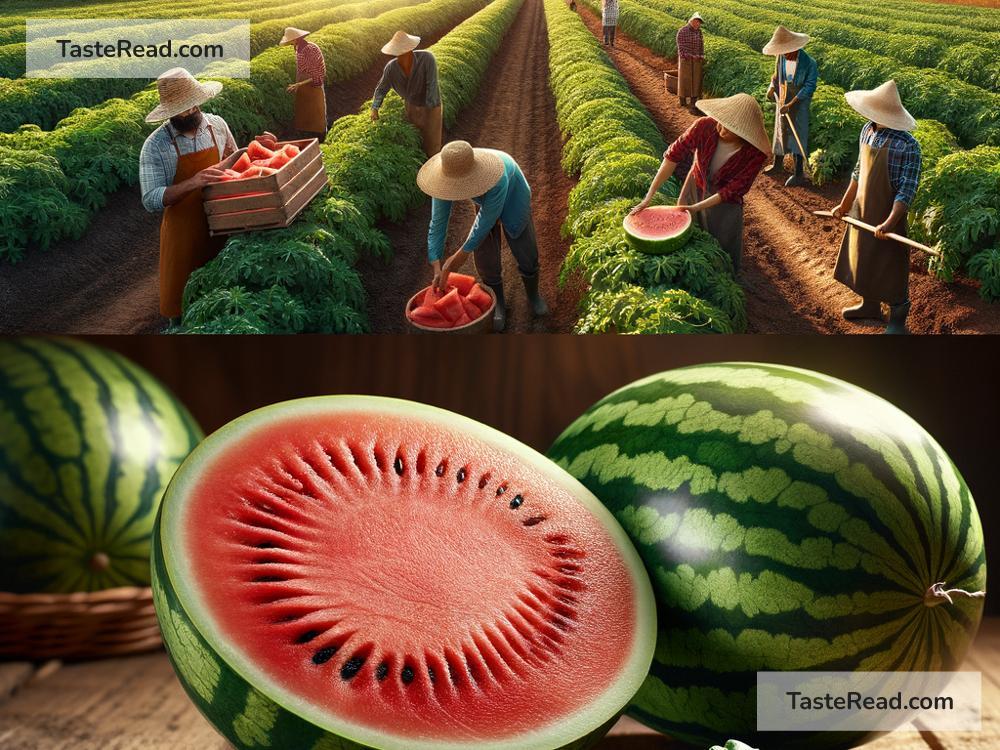The Curious Story of Watermelon Cultivation
Watermelon is one of the juiciest and most refreshing fruits you can enjoy, especially on a hot summer day. But have you ever wondered where watermelons come from or how they’ve traveled across the world to become the beloved fruit we know today? The story of watermelon cultivation is an intriguing journey through history, science, and agriculture.
Origins of the Watermelon
Watermelon has a fascinating background that starts thousands of years ago. This fruit originally comes from Africa, specifically in the regions of northeastern Africa and the Kalahari Desert. Wild watermelons were quite different from the sweet, red-fleshed varieties we eat today. Ancient watermelons were mostly bitter and had light-colored flesh, but their high water content made them useful as a source of hydration for people living in arid lands.
Evidence suggests that watermelons were cultivated as early as 5,000 years ago in ancient Egypt. Archaeologists have even found watermelon seeds and paintings of the fruit in ancient Egyptian tombs. Egyptians likely bred the wild melons into more palatable varieties over time. They valued watermelons not only as a food but also for their ability to supply water during dry seasons.
Spreading Across the World
From Egypt, watermelon cultivation expanded across the Mediterranean region. The fruit gained popularity in areas like Greece, Italy, and Persia (modern-day Iran). Ancient travelers and traders carried watermelon seeds along trade routes, ensuring the fruit’s spread to new regions.
By the time the fruit reached India, around the 7th century, it was further improved with sweeter and larger varieties. Watermelons eventually made their way to China, where they became highly popular. In fact, China is now the world’s largest producer of watermelons.
Watermelons arrived in Europe sometime during the Middle Ages, likely introduced by the Moors in Spain. By the 16th century, they had become common throughout Europe, although some people were still unsure whether to classify them as fruits or vegetables! Watermelon seeds crossed the Atlantic Ocean with African slaves and European settlers, reaching the Americas during the 17th century.
Remarkable Transformation of the Watermelon
The watermelon has undergone a dramatic transformation over the centuries. The wild ancestor of the watermelon was small, round, and bitter, with pale flesh. Early cultivators worked hard to turn this fruit into something larger, sweeter, and more colorful. Selective breeding allowed farmers to develop the varieties we know today.
Modern watermelons are not only delicious but also diverse. Did you know there are more than 1,200 varieties of watermelon around the world? They come in different shapes, sizes, and colors—including orange, yellow, and even white-fleshed watermelons.
Seedless watermelons, which are incredibly popular today, were developed through scientific research in the 20th century. Although seedless watermelons don’t naturally grow that way, scientists found a way to create them by altering the plant’s genetics through hybridization. These watermelons have small, soft seeds that don’t interfere with eating.
Fun Facts About Watermelon Cultivation
Here are some interesting facts about watermelon cultivation:
-
Watermelons thrive in warm climates. As a sun-loving crop, they require plenty of sunlight and warm temperatures to grow. That’s why they are often cultivated in places with hot summers.
-
Water and space are key. Despite its name, watermelon doesn’t like too much water around its roots—good drainage is essential! Additionally, the plant needs ample space since watermelon vines can stretch over 10 feet long.
-
Pollination matters. Bees play a critical role in watermelon farming. Without bees to pollinate the flowers, watermelons wouldn’t grow.
-
China leads the world. China produces the most watermelons globally, accounting for more than two-thirds of the world’s total watermelon production.
-
Every part of a watermelon is useful. While we usually eat the juicy flesh, the rind and seeds are also edible. In some cultures, watermelon seeds are roasted as snacks, while the rind is pickled or used in recipes.
A Fruit That Symbolizes Summer and Togetherness
Watermelon has become so much more than just a hydrating fruit. Across the world, it is a symbol of summer, joy, and togetherness. From picnics and backyard barbecues to festivals celebrating the fruit, watermelon is often associated with happy gatherings.
Countries like the United States even boast watermelon festivals, where communities come together for competitions, seed-spitting contests, and, of course, lots of watermelon tasting. In Japan, farmers have taken watermelon cultivation to a creative level by growing square watermelons, which are easier to stack and transport.
Conclusion
The curious story of watermelon cultivation is a testament to the creativity and persistence of people across history. From the wild, bitter melons of Africa to the sweet, juicy varieties enjoyed worldwide today, watermelon has undergone a remarkable transformation. Its journey through continents and cultures reflects the way agriculture connects us and adapts to meet our needs.
Next time you bite into a slice of watermelon, remember that you’re enjoying a fruit with deep roots and a rich history that spans millennia. Isn’t it incredible how something so simple can carry a story so complex?


